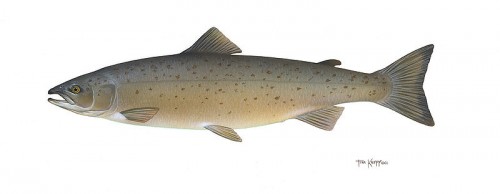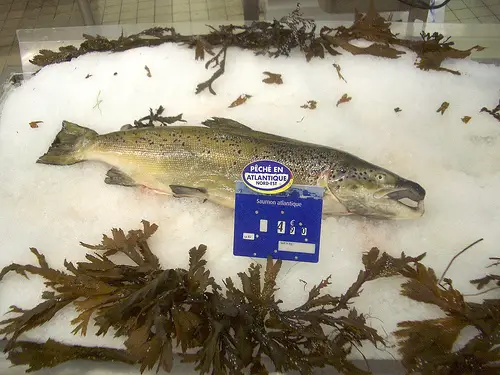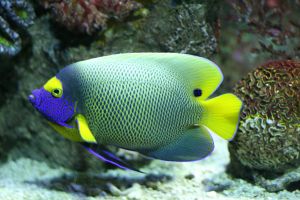Atlantic Salmon
The Atlantic salmon is amongst one of the most beautiful fish in the world, and is also known as a great fighter in the fishing industry. In America, the Atlantic Salmon is considered a symbol of clean and unspoiled waters where the wish swim into the ocean. It can be found in the northern Atlantic Ocean and in the streams that flow into the northern regions of the Atlantic and Pacific Oceans.
Similarly to other salmon species, Atlantic salmon follow an anadromous fish migration pattern, where they live in the salty sea water but return to freshwater streams in order to spawn and hatch their eggs. They will usually return to their native freshwater streams to do this.
A newly hatched Atlantic Salmon alevin will absorb the yolk sack and become a fry within 24 hours. During this first developmental stage, the young salmon grows and subsequently leaves the breeding ground in order to search for food. They will then move to the areas with higher prey concentration. Afte this, they will develop into parr in the final freshwater stage where at this time they prepare for their way to the Atlantic Ocean. At these stages, the Atlantic salmon is very vulnerable to predation where nearly 40% are eaten by trout and other predators such as other larger fish and birds.
They will begin their journey to the ocean after parr develop into smolt. This migration usually happens in the month of March to June. During the period from one to four years they live in the ocean, they are experiencing a period of rapid growth. As they grow, they face predation mainly from humans, sharks, skate, cod and halibut.
As the Atlantic salmon change into grilse phase, they are mature enough and ready to return to its specific fresh water where they were born. Prior to spawning, they stop eating once they arrive to its natal stream. There has been unknown reason for how they able return to the exact spot while there is a suggestion that odor plays an important role in this process. This means that odor is the particular chemical signature of that fresh stream. Once the fish become heavier which weighing around 250 grams, there are no longer become victims of birds and other big fish except for seals.
Over the last two to three centuries anadromous salmonid species is declining compare between the North American and European beaver. Migration of mature Atlantic salmon may be limited by beaver dams during the periods of low stream flows, but the presence of young Atlantic salmon upstream from the dams suggest that the dams are penetrated by parr. Even in periods of low flows, migrations downstream of Atlantic salmon smolts was likely unaffected by beaver dams. It is believed that the two year old parr in beaver ponds in eastern Canada were in a better shape and condition, and also proof to be faster summer growth in length and mass than the beaver from other ponds.
However, Atlantic salmon remains as the most popular fish for human consumption which are commonly sold fresh, canned or frozen.




